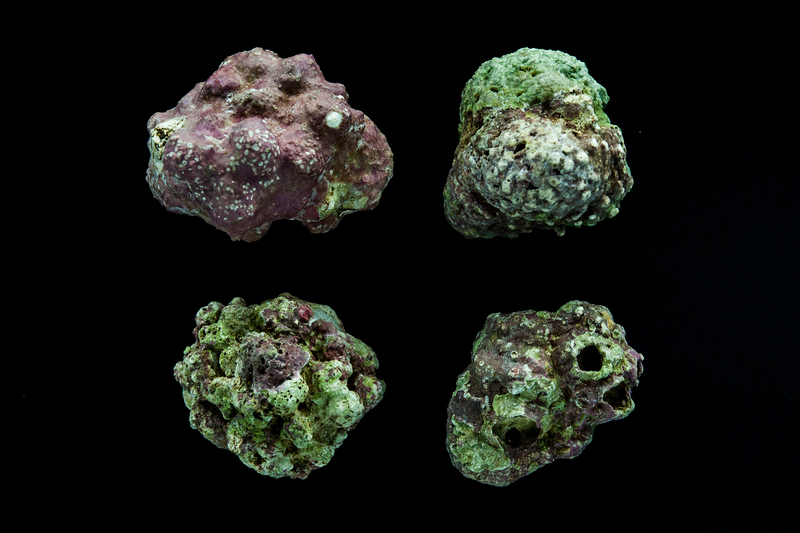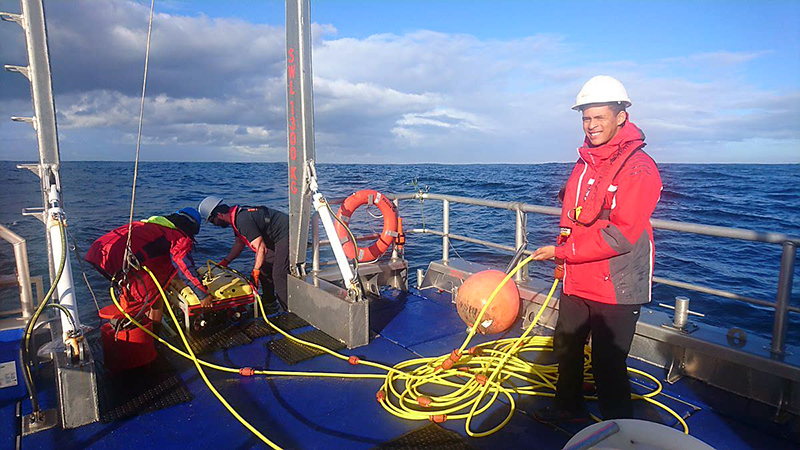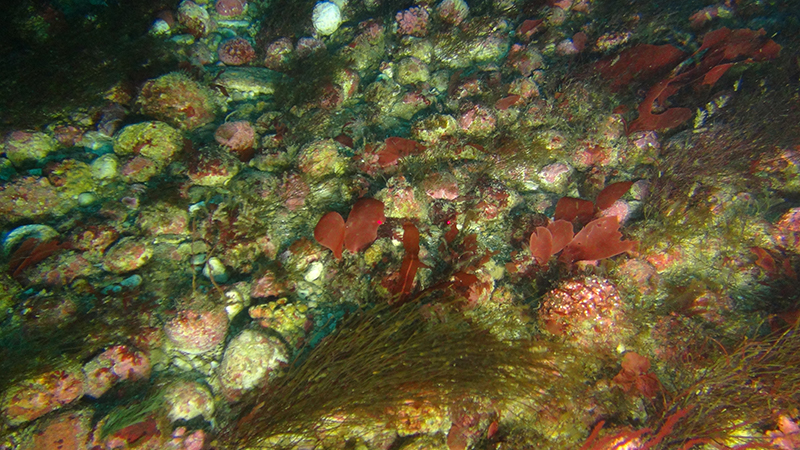Red algae alert! Rhodoliths discovered in SA waters
12 May 2020 | Story Ambre Nicolson. Read time 7 min.
Scientists have discovered a bed of rhodoliths – free-living, coral-like structures that offer food, shelter and nursery space for marine animals – in the newly proclaimed Amathole Offshore Marine Protected Area off South Africa’s east coast. This underwater environment is the first of its kind found in South Africa’s ocean.
“We knew we might make new discoveries when we participated in the African Coelacanth Ecosystem Programme expedition: Imida Frontiers, surveying the underexplored region off the coast of Transkei.
“But we didn’t expect to record the first example of rhodoliths in South African waters,” explains Luther Adams, a postgraduate researcher in the University of Cape Town (UCT) Department of Biological Sciences.
“Increased efforts over the past decade have improved our knowledge of our marine spaces, but there is still so much ground – or should I say, ‘seafloor’ – to cover.”
Adams was part of the team, including scientists based at the national Department of Environment, Forestry and Fisheries, and the South African National Biodiversity Institute, that made the find. He was joined on the survey expeditions by his co-supervisor, Dr Denham Parker, and other UCT associate researchers, Dr Toufiek Samaai, Dr Kerry Sink and Dr Sven Kerwath also from the UCT biological sciences department.
“There have been hints at the presence of rhodolith beds in South Africa from one or two visual surveys in other areas, and a few individual rhodoliths have been found washed up on the beach in Port Elizabeth,” says UCT’s Dr Natasha Karenyi, a marine biologist with an interest in studying seabed ecosystems– a field known as benthic ecology – and Adams’ supervisor.
“But our research presents the first verified rhodolith bed, because we have both visual and physical confirmation of their presence over a relatively large area.”
The rhodoliths were discovered three kilometres offshore at a depth of between 30 and 65 metres.
One of the reasons the team was surprised to find them in this location off the mouth of the Kei River is the large amount of sediment the river expels into the ocean. This is known to smother and cause die-offs of rhodolith beds elsewhere.
“We speculate that the strong Agulhas current, coupled with local changes in water movement, mean that the rhodoliths have seasonally stunted growth due to the river’s influence,” says Adams.
The survey team, headed by Kerwath, under the auspices of the African Coelacanth Ecosystem Programme: Imida Frontiers project, used a mixture of remote sampling tools to map and explore the seabed.
“We used a remotely operated vehicle (ROV), which is like an underwater drone, as well as multibeam bathymetry that uses sonar pulses. These remote sampling techniques were supported by more traditional dredge sampling,” Karenyi explains.

Back in the laboratory, Adams and Karenyi painstakingly pieced together the information gathered during the survey.
By physically examining the rhodoliths collected during the survey and the video footage from the ROV, they found that there were three genera of coralline algae in the area. The team believes that there is a strong possibility that the species at the newly discovered site will prove to be endemic to South Africa, although this will only be confirmed once they have analysed the DNA.
More exploring
Rhodolith ecosystems are often overlooked because they are not large and charismatic like coral reefs. Nonetheless, they play an important function as a food source and habitat for a number of commercially important species.

“The beds also act as habitat for other species of fleshy algae that we commonly see in the intertidal zone. They are also major producers of calcium carbonate, which makes them an important part of the carbon cycle,” says Karenyi.
Adams believes that it is likely that more sites like this will be found in the future.
“We encourage future studies, or even citizen scientists, to see if there are rhodolith beds elsewhere on the South African coastline, especially because they are known to occur in shallow water elsewhere around the world,” he says.
“We don’t know all the kinds of ecosystems we have or how they will be affected as efforts increase to build our ocean economy.”
In Karenyi’s view, this discovery – within three kilometres of the shore – highlights the fact that our marine spaces in South Africa are largely unexplored.
“Increased efforts over the past decade have improved our knowledge of our marine spaces, but there is still so much ground – or should I say, ‘seafloor’ – to cover. We don’t know all the kinds of ecosystems we have or how they will be affected as efforts increase to build our ocean economy. This is why it is exciting to have our offshore marine protected areas.
“In these wonderful spaces, we can explore natural (or close-to-natural or recovering) ocean spaces and use them as a baseline against which to measure the impact of our various human uses.”
- Adams L et al. (2020) Rhodolith bed discovered off the South African coast. Diversity 12(4), 125. https://doi.org/10.3390/d12040125
 This work is licensed under a Creative Commons Attribution-NoDerivatives 4.0 International License.
This work is licensed under a Creative Commons Attribution-NoDerivatives 4.0 International License.
Please view the republishing articles page for more information.
Research & innovation





































